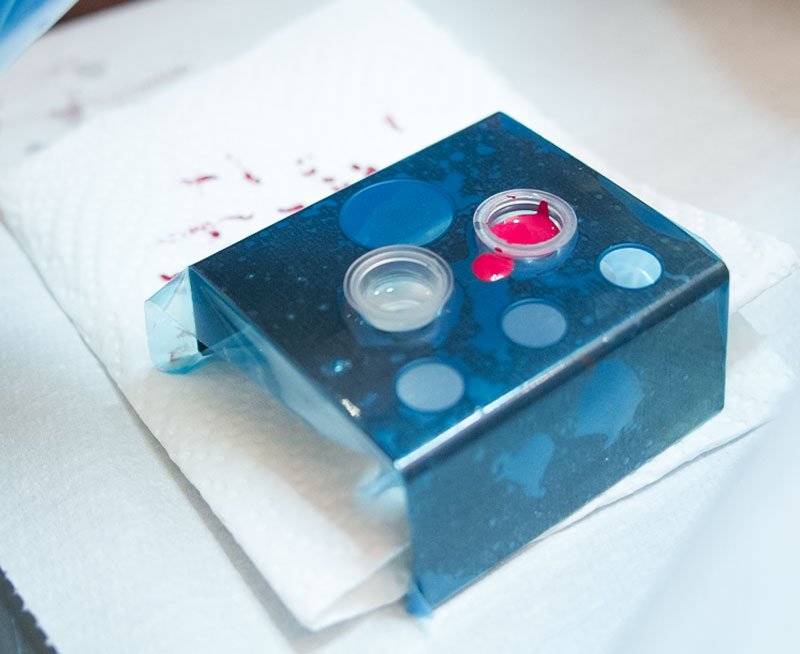After their permanent cosmetics training, all cosmetic technicians explore the equipment available to them until they find a tattoo machine and power supply they are comfortable with, anesthetics that are reliable, and marketing materials that bring affordable results. The most important but elusive element in this process is pigment. A well-trained permanent cosmetic technician quickly acquires the necessary skill to perform the basic procedures.
THE PREMIER PIGMENTS FORMULA
Premier Original Formulas and Premier Concentrated Original Formulas are known for their longevity, stability and trueness of color.
Our pigments have been developed over years of research making them the leading formulas for permanent cosmetic pigments today. Our pigments set the standard for quality permanent cosmetics for the industry. Over the years, Premier Original Colors and now Premier Concentrated Originals have been proven to be safe, long lasting and fade resistant. Millions of individuals implanted with these pigments have safely undergone magnetic resonance imaging and CAT scans without burns or false images. Premier Pigments’ mission is about longevity and safety of permanent cosmetics. One significant difference between Premier Pigments and other permanent cosmetics is that we limit the use of iron oxides and other ingredients that are known to fade and change colors.
PIGMENT SAFETY
Allergic reactions, color absorption, pigment migration, and changes in pigment color have always been the concern of every technician. Technicians must now also be aware of the ferromagnetic properties of some permanent pigments’ ingredients, which may increase risk by exposing their clients to painful and potentially dangerous burns if they undergo magnetic resonance imaging (MRI) or a CAT scan. Visit the Alliance for Safe Practice for more information on FDA, permanent cosmetic pigment formulations and pigment safety.

THE TRUTH ABOUT IRON OXIDES
The iron oxide compounds typically found in inexpensive pigments are approved by the FDA for use in foods, drugs and cosmetics applied daily; but, these ingredients are inappropriate for use in permanent cosmetic applications.
The use of Iron Oxides in permanent cosmetics may only be due to its extremely low cost and its approval by the FDA for use in foods, drugs and conventional cosmetics; allowing unscrupulous manufacturers just enough legal license to deceive the public into believing that their products are approved for use under the skin. Iron oxide is a binary compound consisting of iron and oxygen, most commonly seen as rust, hence the colors it bases, reds and browns. Iron oxide based pigments implanted in the lips or brows will sometimes disappear in a few days or worse, turn pink or purple in a few months. Pigments are no more magical than the ingredients that build them; therefore it is nonsensical to believe that implanted pigment could perform a disappearing act. The inexperienced technician will too often blame their technique for lack of a better reason.
Mapping the mechanics of a permanent cosmetic procedure, Dr. Narayan Hosmane, professor of inorganic chemistry theorized that iron oxide, when broken down, is both iron and oxygen, elements common to the hemoglobin found in human blood cells. The dermal layer of the skin is lined with blood vessels. When iron oxide or any pigment is implanted into the blood cells, it is interacting directly with the hemoglobin in each cell. The body, performing its natural functions and processes, does not distinguish iron in pigment to be any different from iron in blood and accepts part of the iron oxide base into the blood vessel. Therefore part of the pigment base is absorbed by the body as it would a Geritol iron supplement. The remaining cosmetic color will disperse in the dermal layer either leaving a faint pink discoloration or disappearing completely.
Technicians seeking natural pigments must understand that any natural pigment can be processed through the blood, much like food and therefore cannot be used to achieve a permanent color. Any technician performing procedures with iron oxide pigments is doing a disservice to themselves as well as their client. The client is paying a large sum for a procedure that will not be permanent and the technician is wasting valuable time doing repeated touch-ups.
Permanent cosmetic enhancement can be one of the most lucrative services the beauty industry can offer; it has the opportunity for enormous growth. However, technicians who insist on using inferior pigments may see the business opportunities vanish along with the pigment they implant. For more information on FDA, permanent cosmetic pigment formulations and pigment safety, visit the Alliance for Safe Practice.
